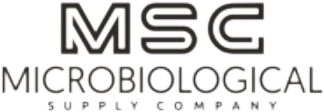Best Practices for Clinical Waste Disposal: A Comprehensive Guide

Sharps
The directive to place all contaminated sharps, including needles, scalpel blades, small quantities of blood tubes, and glass slides, into a yellow-lidded sharps bin adheres to standard biological safety protocols designed to mitigate the risk of injury and prevent the spread of infectious agents. When sharps are contaminated with infectious agents or Genetically Modified Micro-organisms (GMMs), it is imperative that these bins undergo autoclaving prior to disposal. This sterilization process is crucial for neutralizing potentially hazardous biological material. In cases where sharps are not contaminated with such agents, the bins still require clear labeling that includes the lab number and department. Subsequently, these should be deposited directly into a 770 litre clinical waste wheelie bin. This procedure not only ensures the safety of personnel handling these materials but also complies with regulatory guidelines for the disposal of biohazardous waste.
Pipette Tips
It is imperative that the specified items are not directly deposited into autoclave bags, as there exists a substantial risk that they might breach the material, leading to potential dermal scratches or superficial puncture wounds. To mitigate such risks, it is advised that these items be securely placed within Dispo-Safe jars or an equivalent alternative that ensures similar levels of protection and containment. Adhering to this procedure not only upholds the safety standards but also contributes to the maintenance of hygiene and safety protocols in the operational environment.
These jars should then be autoclaved (if tips are contaminated with infectious or GM agents) before placing in yellow clinical waste bags for incineration.
Serological Pipettes
In accordance with the provided instructions, it is imperative to observe that serological pipettes be securely enclosed within autoclave bags, with a strong recommendation for double-bagging when feasible, subsequently placed within a durable and stable container. Furthermore, for the purpose of disposal, pipettes ought to undergo autoclaving prior to their placement in yellow bags designated for incineration. An alternative method allows for pipettes to be submerged in Dispo-Safe jars containing a validated disinfectant, ensuring complete immersion and the efficacy of the disinfection has been verified. Post-disinfection, it is crucial that these items are sent for incineration in a sturdy container, such as a cardboard box, to ensure their integrity during transportation, and encased within yellow bags. Adherence to these procedures is paramount in maintaining optimal safety and hygiene standards.
Other Clinical Waste items
The meticulous handling of all other clinical waste, such as petri dishes, gloves, and items contaminated with infectious agents or genetically modified organisms, underscores the imperative for stringent biosafety measures. Initially, these items must be securely placed in autoclave bags designed to withstand the high-pressure saturated steam environment of the autoclave process. This critical step ensures the decontamination of the waste through sterilisation, effectively neutralising any potentially hazardous biological agents present. Following the autoclaving process, the waste should then be transferred into designated yellow bags, which signal that the contents are destined for incineration.
Materials identified as clinical waste that are not contaminated with infectious agents or genetically modified (GM) micro-organisms necessitate a specific disposal protocol for ensuring environmental safety and compliance with health regulations. Such items, despite their clinical origin, can be categorized for disposal in a manner that is less stringent than that for infectious waste, given their non-infectious nature. As per the guidelines, these materials should be disposed of directly into designated yellow bags, which are specifically intended for clinical waste with a lower risk profile. Subsequently, these yellow bags should be securely placed within a 770-litre yellow cart, signifying their readiness for collection and disposal by facilities equipped to handle this type of waste. This methodical approach toward segregation and disposal is crucial for maintaining a safe and clean environment, preventing contamination, and ensuring that all waste is treated with the appropriate level of caution
Liquid Waste
Proper handling and disposal of liquid waste is paramount in laboratory and medical settings to ensure biosafety and compliance with regulatory standards. Liquid waste, including but not limited to cultures, stocks, and specimens, should be meticulously collected in autoclavable, screw-capped plastic containers, which are specifically designed to withstand high-pressure steam sterilisation. These containers facilitate the secure transfer of liquid waste to an autoclave, where it must undergo a liquids cycle to effectively neutralise any biohazardous agents. Post-autoclaving, the sterilised contents are safe for discharge into the drainage system. Additionally, chemical disinfection of liquid waste is a viable alternative, provided that the methodology is rigorously validated to achieve the required decontamination levels. For the treatment of substantial blood volumes, beyond mere residues, the utilisation of superabsorbent polymers such as Vernagel in suitable containers is recommended. This approach solidifies the blood, simplifying its handling and reducing the potential for spillage during the disposal process.
It is imperative to underscore that Vernagel, a superabsorbent polymer used in various healthcare settings for the management of liquid waste, is highly combustible when subjected to the high-pressure and high-temperature conditions of autoclaving. This characteristic necessitates that once Vernagel has solidified, containing the absorbed liquids, the container must be securely sealed to prevent leakage and then disposed of in accordance with healthcare waste management protocols. Specifically, the sealed container should be placed in a designated yellow waste bag, which signals that the contents are clinical waste intended for incineration. Such disposal measures are critical for ensuring safety and maintaining compliance with hazardous waste regulations.
